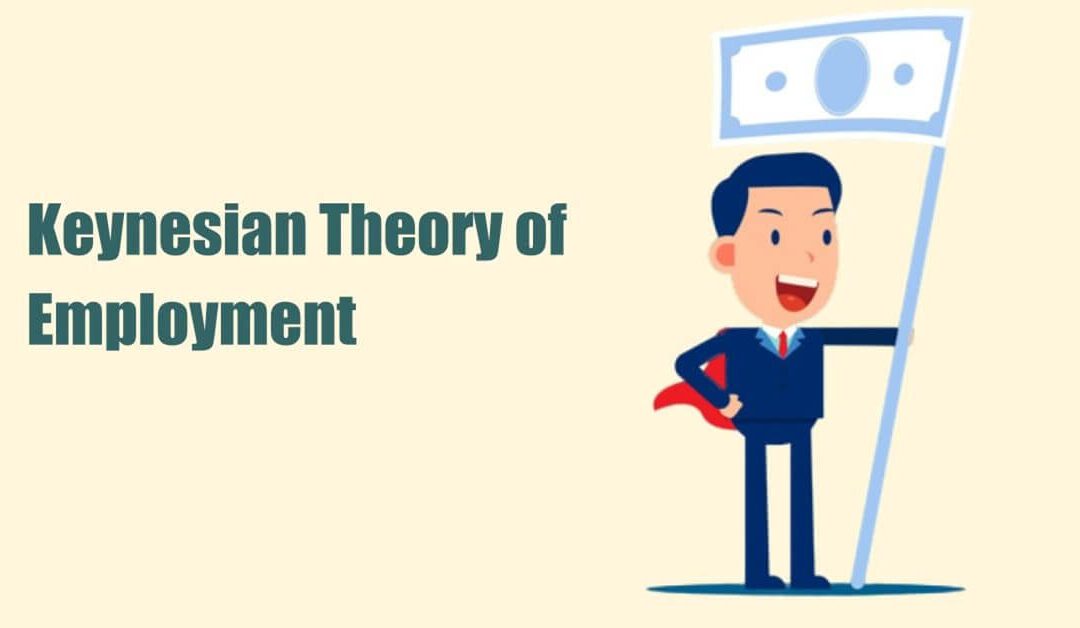
Keynesian Theory of Income, Output, and Employment
Introduction
John Maynard Keynes (1883–1946), a renowned English economist, revolutionised economic thought by challenging the ideas of classical economists. His groundbreaking work, “The General Theory of Employment, Interest, and Money” (1936), introduced innovative concepts that addressed the critical issues of his time, especially the Great Depression of the 1930s. Keynes advocated for a shift from the traditional reliance on free markets to a more government-influenced economic system, laying the foundation for modern macroeconomics. This significant shift in thinking is often referred to as the “Keynesian Revolution.”
Keynesian Theory Overview
Keynes developed his theory as a direct response to the classical theory of employment, which assumed that markets would naturally achieve full employment. He argued that this was unrealistic and proposed that government intervention was essential to address unemployment and economic instability. The Keynesian theory emphasizes the role of aggregate demand (total demand for goods and services in the economy) in determining income, output, and employment levels.
Main Features of Keynesian Economics
1. Limited Free Enterprise
Keynes rejected the idea of unrestricted free markets, proposing a mixed economy where government intervention plays a significant role in stabilizing the economy.
2. Government’s Role
He emphasized the importance of government intervention in economic activities to stimulate growth and employment. The government should act as a leader in economic development, especially during downturns.
3. Focus on the Short Run
Keynesian economics addresses short-term economic issues, making it highly relevant for tackling immediate problems like recessions and unemployment.
4. Deficit Financing and Monetary Policy
Keynes advocated for deficit financing (spending more than government revenue) and cheap money policies (low-interest rates) to boost demand, employment, and economic development.
5. Investment Drives Growth
According to Keynes, investment is the key determinant of production and employment levels. Increased investment leads to higher output and job creation.
6. Law of Diminishing Returns
Keynes acknowledged that production is subject to diminishing returns, meaning that beyond a certain point, additional inputs yield smaller increases in output.
7. Perfect Competition Assumption
Keynesian theory operates under the assumption of perfect competition in markets, where no single buyer or seller can influence prices.
8. Macroeconomic Focus
Unlike classical economics, which focuses on individual markets, Keynesian analysis considers the economy as a whole, making it a macroeconomic approach.
9. Underemployment Equilibrium
Keynes believed that economies typically operate below full employment, settling at an underemployment equilibrium due to insufficient demand.
10. Fixed Short-Term Factors
In the short run, factors such as population, labour force, labour efficiency, and technology are assumed to remain constant.
Keynesian Perspective on Inflation
1. Demand Deficiency Theory
Keynes argued that unemployment arises from a lack of effective demand. Full employment, he believed, is an unrealistic goal, as economies tend to stabilize at underemployment levels.
2. Employment and National Income
Employment levels are directly linked to national income and output. To increase income and output, idle resources, especially labour, must be utilized effectively.
3. Theory of Employment and Income Determination
Keynesian economics is often referred to as the “theory of employment determination and income determination” because of its emphasis on increasing demand to boost employment and economic growth.
Conclusion
Keynesian theory transformed economic thinking by addressing the limitations of classical economics. It highlights the importance of government intervention and aggregate demand in driving economic stability and growth. This approach remains highly influential, providing a framework for policymakers to tackle unemployment, recession, and economic stagnation.
